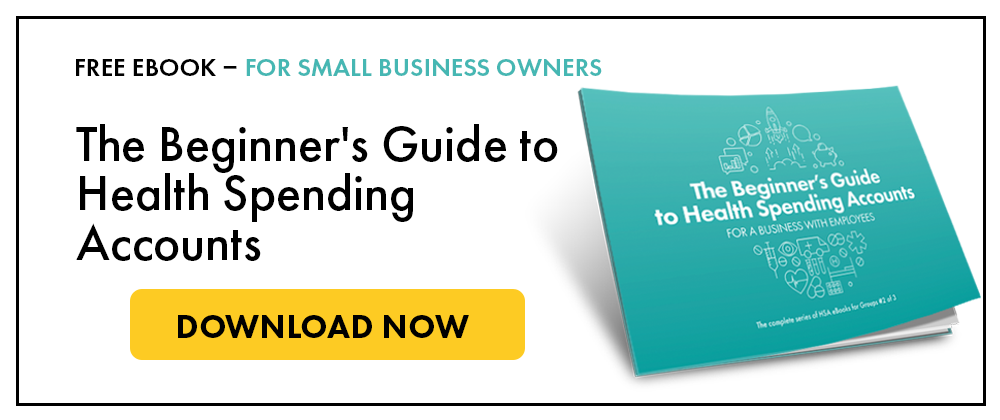Ultimately, employee benefits are an investment into your employees. Like all investments, you want the return to surpass the cost. To add onto that analogy, you can’t expect great investments to appear overnight, so don’t expect the same of employee benefits either.
A top tier benefits program requires proper execution and planning, both administratively and financially. If you are an employer thinking about employee benefits, it’s a step in the right direction. Use these 10 employee benefits best practices to ensure that your plan runs smoothly and brings positive change.
1. Choose wisely
With limited resources and varying employee preferences, selecting employee benefits can be a challenge. Consider looking at the demographics of your employees and/or conducting a survey. It’s amazing what a few questions can reveal. Tailored benefits can keep employees satisfied and productive.
Here’s an example of well-intended benefits directed to the wrong people: you run a start-up business which hires new grads and interns. It doesn’t make sense to offer a retirement plan until later on. Currently, they’re probably looking for off-site social events or a gym membership. If you are not addressing the needs of your employees, then you are not getting a return on your investment.
It’s not just about the employee benefits selection, but also the provider. The best provider for your plan depends on your company size, employee number, budget, culture, etc.
2. Assign roles accordingly
A diversified employee benefits program is a substantial task. Don’t place all the responsibilities onto one individual. This can lead to miscommunication and chaos. Even small business can come across issues when roles are not delegated. Like every other aspect of business, assign permissions to those who are interested.
3. Have a system in place
Whether it is a physical or digital process, implement a system and database to keep track of financials and administrative procedures. It’s a simple step that many employers are quick to forget. Such a system holds both parties accountable, so that neither employees nor employers can abuse their benefits. There are hundreds of automated digital platforms offering streamlined human resources management, available to business of any size.
4. Explain your employee benefits
Choosing employee benefits is complex, but explaining them can be even harder. Take the time to explain your benefits. As we all know, awareness is key to maximizing your return. Further on, benefits education can be implemented into your onboarding or recruiting process. Streamlining this process can lead to higher levels of participation in employee benefits, which translates to more efficient workers.
5. Treat employees like customers
Employees are often a company’s greatest asset, so why not treat them as such. Furthermore, they can be great brand ambassadors. Not only will they refer your products, but also your brand image, which can lead to talented recruits down the line.
6. Intertwine benefits into company culture
Since every company has a unique identity, it makes sense to tailor your benefits towards that image. Like any other aspect of business, you can utilize your benefits package to shape your brand. Within the fitness and health industry, many companies choose health-related benefits. It makes sense because it relays their company values.
The main takeaway is that employee benefits works in conjunction with your company culture. It can build on your company culture or vice versa. For example, introducing health benefits can promote or incentivize health and wellness within your company culture.
7. Don’t forget about health benefits
It’s no surprise that health benefits are a top priority for employees.
A plan which offers comprehensive dental, vision, and health coverage is a staple within employee benefits. Some employers choose to include supplemental group coverage into their plan.
8. Make it easy to participate
This goes back to explaining employee benefits and having a system in place. Once employees are aware of their benefits, make it easy to use, whether that means providing claims forms, automatic enrollment, or information seminars. As stated above, a thoughtful onboarding process could simplify information for new recruits.
9. Create a benchmark for comparison
You can always improve your employee benefits plan. That’s why most companies have an entire department (human resources) dedicated to it. The easiest way to compare is to check within the industry. Consult with your employees about their previous experiences with employee benefits and/or research your competitors.
10. Support your employees
An employee benefits program exists to attract and retain employees. So do just that! Invest in your number one asset, employees. Provide training programs, seminars, and opportunities. Remember, an investment in your employees is one that goes back into the company.
Learn how an Health Spending Account provides flexible health and dental coverage for you and your employees.
Download "The Beginner's Guide to Health Spending Accounts" for FREE:

Additional reading for employee benefits:
Top 24 FAQ for Employee Benefits Packages for Small Business
Learn how employee benefits can work for your business
Top 5 Pitfalls when choosing your employee benefits

